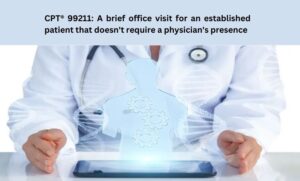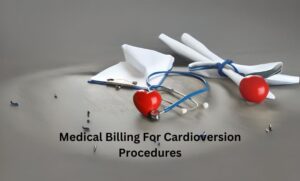In revenue cycle management (RCM), prior authorization plays a crucial role in ensuring that healthcare services are covered by insurance providers before they are delivered. However, the process of obtaining prior authorizations can be complex and time-consuming, leading to delays in patient care and reimbursement. To help healthcare organizations navigate this challenge effectively, here are some essential tips to handle prior authorization in RCM.
Top 11 Tips To Handle Prior Authorization in RCM
Navigating the world of revenue cycle management (RCM) can be complex, especially when it comes to handling prior authorization. As a crucial step in the healthcare billing and coding process, prior authorization requires careful attention and effective strategies to ensure seamless operations and maximize revenue. To help you streamline this process, we have gathered valuable tips to handle prior authorization effectively within your RCM workflow.
Understand Prior Authorization Requirements:
The first step in managing prior authorization efficiently is to have a clear understanding of the requirements. Familiarize yourself with the specific guidelines of different insurance providers, including the necessary documentation, forms, and supporting information. By comprehending the requirements, you can streamline the process and reduce the chances of denials or delays.
Train Staff on Prior Authorization Processes:
Ensuring that your staff is well-versed in the prior authorization process is crucial. Conduct comprehensive training sessions to educate your team about the importance of prior authorization, the specific requirements of different insurance providers, and the necessary steps to obtain authorization. This training will empower your staff to handle prior authorization requests efficiently, reducing errors and improving the overall revenue cycle.
Implement Technology Solutions:
Leveraging technology solutions can significantly streamline the prior authorization systems that integrate with your practice management or electronic health record system. These systems automate the process, allowing for electronic submission, tracking, and monitoring of prior authorization requests. By reducing manual paperwork and streamlining communication with insurance providers, technology solutions can save time and improve efficiency.
Develop Standardized Processes:
Standardized processes play a vital role in ensuring consistency and efficiency in prior authorization management. Develop a clear workflow that outlines the steps involved in requesting and tracking prior authorizations. Assign specific responsibilities to staff members, establish timelines, and document all interactions with insurance providers. This standardized approach will minimize errors, enhance accountability, and provide a clear audit trail if needed.
Maintain Open Communication with Payers:
Establishing and maintaining open communication channels with insurance payers is essential in the prior authorization process. Build relationships with payer representatives and stay updated on any changes in their policies or procedures. Regularly communicate with payers to verify prior authorization requirements, obtain clarification on specific cases, and resolve any issues that may arise during the process. This proactive approach can help prevent delays and denials.
Track and Monitor Prior Authorization Requests:
Keeping a close eye on the status of prior authorization requests is crucial to ensuring timely patient care and reimbursement. Develop a robust tracking and monitoring system to keep tabs on the progress of each request. Regularly follow up with insurance providers to avoid delays and identify potential roadblocks. By closely monitoring the process, you can take necessary actions promptly and reduce the risk of non-payment.
Establish Prior Authorization Metrics:
Establishing key performance indicators (KPIs) related to prior authorization can help you measure your organization’s efficiency and identify areas for improvement. Track metrics such as the number of denials, turnaround time, and approval rates. Analyze this data regularly to identify trends, bottlenecks, and areas where the process can be streamlined. This data-driven approach will allow you to make informed decisions and implement strategies to enhance prior authorization outcomes.
Outsource Prior Authorization Services:
For healthcare organizations struggling with the complexities of prior authorization, outsourcing this function to specialized service providers can be a viable option. Prior authorization outsourcing companies have the expertise, technology, and resources to handle the process efficiently. By delegating this task to experts, you can free up your staff’s time, reduce administrative burden, and improve overall revenue cycle performance.
- Utilize Prior Authorization Checklists: Develop checklists that outline the necessary steps and documentation required for each type of prior authorization. These checklists will serve as a quick reference guide for your staff, ensuring that no essential information is missed during the process.
- Optimize Documentation Practices: Ensure that your documentation is thorough, accurate, and supports the medical necessity of the requested services. Include all relevant clinical information, test results, and patient history to strengthen the case for prior authorization approval.
Also Read:
- Strategies to improve patient flow in urgent care
- Must know trends for medical billers and coders
- Key Metrics condiser during your practice analysis
Educate Patients:
Educate your patients about the importance of prior authorization and their role in the process. Clearly explain the need for their cooperation in providing timely information and signatures. By keeping patients informed and engaged, you can minimize delays caused by missing or incomplete patient-related documentation.
Implement Real-Time Eligibility Verification:
Prior to initiating a service or procedure, verify the patient’s insurance coverage and determine if prior authorization is required. Implement real-time eligibility verification tools that integrate with your electronic systems, allowing you to identify any potential authorization issues upfront and take necessary actions promptly.
Prioritize Urgent Cases:
Identify and prioritize urgent cases that require expedited prior authorization. Develop a process to fast-track these requests and ensure that they receive immediate attention from your staff and insurance providers. This will help prevent unnecessary delays in providing critical healthcare services.
Conclusion:
By following these tips, you can enhance your ability to handle prior authorization effectively, minimize denials, reduce administrative burdens, and ensure timely reimbursement. Remember, prioritizing a streamlined prior authorization process contributes to improved patient care, enhanced revenue flow, and the overall success of your healthcare organization.









